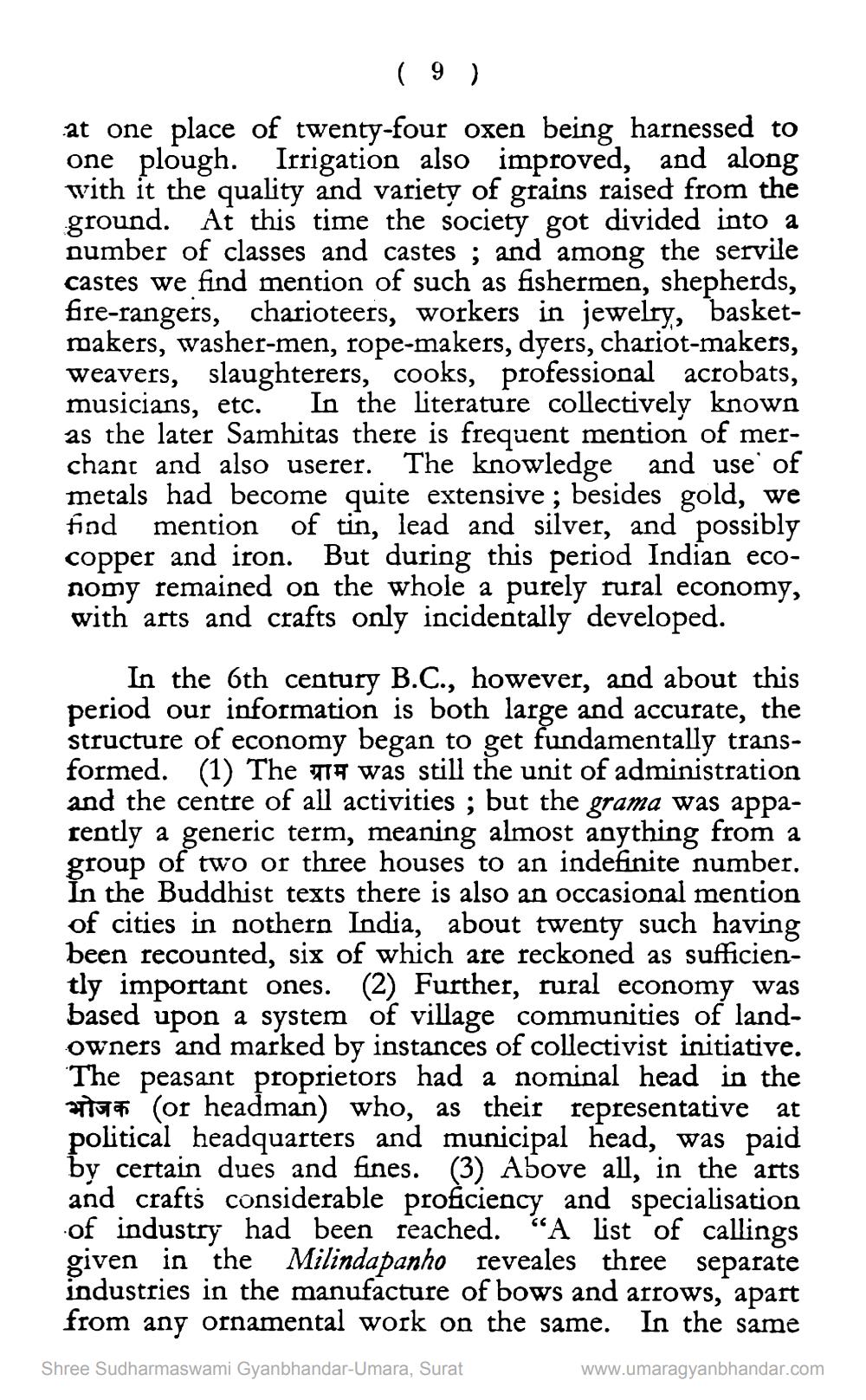________________
(9) at one place of twenty-four oxen being harnessed to one plough. Irrigation also improved, and along with it the quality and variety of grains raised from the ground. At this time the society got divided into a number of classes and castes ; and among the servile castes we find mention of such as fishermen, shepherds, fire-rangers, charioteers, workers in jewelry, basketmakers, washer-men, rope-makers, dyers, chariot-makers, weavers, slaughterers, cooks, professional acrobats, musicians, etc. In the literature collectively known as the later Samhitas there is frequent mention of merchant and also userer. The knowledge and use of metals had become quite extensive ; besides gold, we find mention of tin, lead and silver, and possibly copper and iron. But during this period Indian economy remained on the whole a purely rural economy, with arts and crafts only incidentally developed.
In the 6th century B.C., however, and about this period our information is both large and accurate, the structure of economy began to get fundamentally transformed. (1) The Th was still the unit of administration and the centre of all activities ; but the grama was apparently a generic term, meaning almost anything from a group of two or three houses to an indefinite number. In the Buddhist texts there is also an occasional mention of cities in nothern India, about twenty such having been recounted, six of which are reckoned as sufficiently important ones. (2) Further, rural economy was based upon a system of village communities of landowners and marked by instances of collectivist initiative. The peasant proprietors had a nominal head in the at (or headman) who, as their representative at political headquarters and municipal head, was paid by certain dues and fines. (3) Above all, in the arts and crafts considerable proficiency and specialisation of industry had been reached. “A list of callings given in the Milindapanho reveales three separate industries in the manufacture of bows and arrows, apart
from any ornamental work on the same. In the same Shree Sudharmaswami Gyanbhandar-Umara, Surat
www.umaragyanbhandar.com




